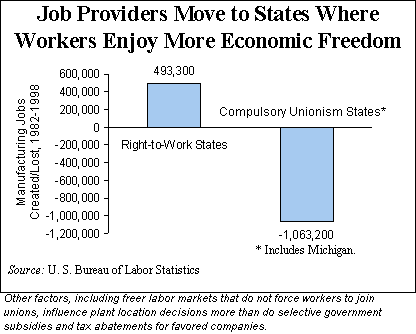The Crash of 1929 Could It Happen Again Mackinac Center
Post on: 26 Сентябрь, 2015 No Comment

Seventy years ago, America’s 12-year Great Depression began with a crash. The bottom fell out of the stock market on October 24, 1929, signaling the start of the longest and deepest economic decline in the nation’s history. Everyone today wants to know if it could ever happen again.
Black Thursday, as October 24 was called, shook Michigan harder than almost any other state. Stocks of auto and mining companies were hammered. Auto production in 1929 reached an all-time high of slightly more than five million vehicles, then quickly slumped by two million in 1930. By 1932, near the deepest point of the Depression, they had fallen by another two million to just 1,331,860—down an astonishing 75 percent from the 1929 peak.
For the most part, economists now know that the stock market did not cause the 1929 crash. It was itself a symptom of the Federal Reserve System‘s wildly erratic shifts in the nation’s money supply.
Smaller auto companies, especially those outside of Michigan, disappeared by the dozens in the years after the crash. General Motors, Chrysler, and Ford tried in vain to keep car sales up by slashing prices. Though sales plummeted, the Big Three emerged from the Depression with a higher market share (90 percent) than they had in the 1920s.
Billy Durant, the founder of General Motors, sold most of his stocks in the months before the crash. But in 1930, he miscalculated. Thinking the hard times were over, he bought stocks heavily and was dragged down into personal bankruptcy as the market eventually fell to a fraction of its 1929 high.
Large oil deposits had been discovered in Saginaw County in 1925 and Isabella County in 1928. The brief boom that followed made Mt. Pleasant the oil capital of Michigan. But when the stock market crashed, the oil business flopped as well. So did mining in the Upper Peninsula, where by the middle of the 1930s, almost every mine was closed.
Unemployment among Michigan nonagricultural workers had been very low in the ‘ 20s, then soared to 20 percent in 1930. By 1933, nearly half of all Michigan nonfarm workers were jobless. It was no better on the farms, where prices plunged, foreign markets dried up demand, and thousands of the state’s farmers went broke.
The economic trauma transformed the political map of Michigan, a state once so solidly Republican that at one point in the 1920s, there were no Democrats at all in the legislature. In 1932, the Democrats won a majority in both houses, elected a governor for only the second time in 40 years, and carried the state for Franklin Roosevelt in the presidential election. Thanks largely to the next decade of unwise policies at the state and national levels, Michigan and the country were still plagued with sky-high unemployment on the eve of Pearl Harbor in December 1941.
Could a Great Depression happen again? Possibly, but it would take a repeat of the bipartisan and devastatingly foolish policies of the 1920s and ‘ 30s to bring it about.
For the most part, economists now know that the stock market did not cause the 1929 crash. It was itself a symptom of wildly erratic shifts in the nation’s money supply. The Federal Reserve System was the primary culprit, having stimulated a boom with dirt-cheap interest rates and easy money in the early ‘ 20s. By 1929, the central bank had jacked up rates so high that it choked off the boom and forced a reduction in the money supply by one-third between 1929 and 1933.

In 1930, Congress took a recession and turned it into a Great Depression. It raised tariffs so high they virtually closed the borders to imports and exports. It doubled income tax rates in 1932. Franklin Roosevelt, who campaigned on a platform of less government, actually gave America much more. His New Deal raised taxes (he once proposed a 99.5 percent tax rate on incomes over $100,000), punished investment, and smothered business with red tape and regulations.
Today, Michigan is no longer heavily dependent upon one industry as it was in the 1920s. However, it is, like all states, dependent upon the whims of Washington policy makers. And the formula for producing economic depressions remains the same: Politicians pushing interest rates too high, choking off free trade, crushing incentive with high tax rates, and regulating business into the ground.
The crash of ‘ 29 and the subsequent Depression are worth remembering not only because they produced great pain in Michigan and elsewhere, but also because as philosopher George Santayana warned, Those who cannot remember history are condemned to repeat it.
#####
(Lawrence W. Reed is president of the Mackinac Center for Public Policy, a research and educational institute headquartered in Midland, Michigan. More information on economic history is available at www.mackinac.org. Permission to reprint in whole or in part is hereby granted, provided the author and his affiliation are cited.)
ISSN: 1093-2240, SKU: V1999-37














